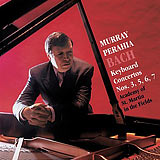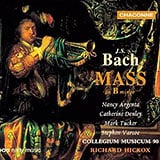Home Donate New Search Gallery Reviews How-To Books Links Workshops About Contact
Recommended Discs
© 2012 KenRockwell.com
November 2012 Audio gear reviews All reviews
|
|
This is a short list of some recordings I've found interesting. Everyone's tastes differ, and I think most people will enjoy these, or at least find them interesting.
While some people waste hours a day watching TV, I can enjoy hours every day listening to music — and I never want to stop; there's always something excellent on. I'm astounded at how much some people will spend on stereo gear, but then not want to spend anything getting some interesting music to enjoy, as if spending $15 to get a great new album was wasteful and a $999 power cord was a bargain. That's not me.
There is far from an exhaustive list; it's just what I had on hand that I thought you might enjoy.
I don't listen to words. Like operas, if I ever stopped to listen to the words, it usually takes the magic out of the music, so I ignore them.
Since most of you readers are gear-heads, I'll also include some duds as well as other items that sound interesting or make a point.
Click the album covers or links and in most cases you can audition clips from each.
In general, anything from EMI or Harmonia Mundi sounds great from the big labels, and for a small label, check out the offereings from MA Recordings.
Music
|
|
Bach Keyboard Concertos, Murray Perahia (2002 & 2003) Each of these these two albums with numbers 1, 2 & 4 and with numbers 3, 5, 6 & 7 are insanely good: they are each brilliant performances of genius music, fantastically well recorded. Put one of these in your player, and even if you thought you hated real music, you'll be convinced. These sing because these are harpsichord concerti, played on piano. Harpsichords had no real dynamics, and thus the music here was good enough to have survived the ages being played without dynamics. Interpret them as they are here on a piano which can add dynamics, and these pieces positively explode. Everyone should love these two recordings. |
Bach Mass in B Minor BWV 232, Hickox (1992) Among the world's greatest pieces of music, the Bach B-minor mass has been recorded many times. This version is my favorite. If you think choral music is boring, you haven't heard this masterpiece. Bach spent about 25 years on and off working on this. Masterpieces like this don't happen every century. Listen carefully. |
|
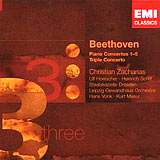
|
Beethoven Piano Concertos, Zacharias/Vonk (2007) Great recordings of brilliant performances of some of the world's greatest music ever, and a bargain price for this three-CD set! Popped on a decent hi-fi and closing my eyes, I can see everything happening; I'm there. Everyone should love this. |

|
Mozart Piano Concertos #21 & 22, Jonathan Biss (2008) This is the most riveting performance of these pieces that I've ever heard. As others on this list, some of the world's most inspired music, brilliantly performed and recorded magnificently. Everyone should love this. |
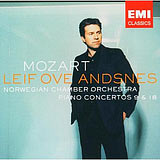
|
Mozart Piano Concertos 9 & 18: Andsnes (2004) Genius music, brilliant performance and flawless recording. Bravo! |
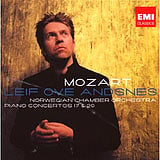
|
Mozart Piano Concertos 17 & 20: Andsnes (2008) Genius music, brilliant performance and flawless recording. Bravo! |
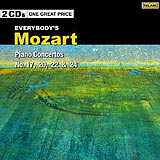
|
Mozart Piano Concertos 17, 20, 22 & 24 (1992 & 1993) These John O'Conor performances aren't quite as explosive as the others I suggest, however this is a bargain of a two-CD reissue of two CDs that sold for around $30 each when first released. You lose the nicer artwork on the covers, but the CDs inside are the same. If you're not yet a fan of real music, you might want to start with this set on the cheap for some great recordings of some of the world's greatest music. If you get the other performances, you don't need this, but if real music is new to you, feel free to start here. Everyone should love these, even if they don't know music. |
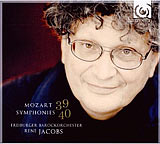
|
Mozart Symphonies #39 & 40: René Jacobs (2010) These are the most explosive performances I've ever heard of these timeless classics. If you want to be put to sleep by your music, this isn't the disc for you. These are brilliant, spirited dynamic performances, with better hall sound and much more quiet than a live performance; they're playing against a background of silence without coughing or trucks rumbling. It's astounding to me how much better classical music recording continues to get over time. |
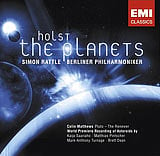 |
Holst: The Planets. Simon Rattle/Berlin (2006) This performance is the best I've heard of this popular piece, where Holst makes the orchestra do things it's never done before. You can ignore the second disc with another work on it; this rendition of The Planets is fantastic. Technically, this is a silent recording with a huge dynamic range. Just try to leave your volume control untouched for the entire work; I dare you. The quiet parts get very quiet, and the loud get very loud, all on a background of inky black silence. Pretty good for a live recording! |
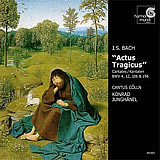 |
Bach: Actus Tragicus (2000) These are serious works for serious lovers of vocal music. Like most of the Harmonia Mundi catalog, the recordings are stunning. Pop it on a spectacular hi-fi system, close your eyes and you're there. You can see and hear everything as if you're there. |
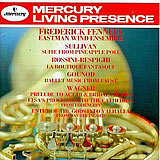
|
Fennell & The Eastman Wind Ensemble (1958) This was one of the records of the year in 1958, and today, it remains among the definitive recordings of the greatest performances of all time of this repertoire. Brilliant in 1958 on LP, and even better today on CD from the original 3-track tapes. This will show you that well-recorded music has happened regardless of the technology available. |
Tchaikovsky Symphonies 2 & 6, Philharmonia Orchestra, Carlo Maria Giulini (1956) Brilliant music brilliantly performed and very well recorded. I didn't even notice it was recorded in 1956 until I read the very fine print! This also will show you that there are plenty of brilliant performances and great-sounding recordings from over 50 years ago. It's always the artists, never the gear. |
Popular
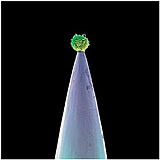
|
Peter Gabriel: New Blood (2011) I love hearing recordings by talented people with big budgets. These are symphonic renderings of Peter Gabriel's greatest by and with Peter Gabriel, and like the originals, all explore new musical ground. Like Holst's planets, you'll hear the orchestra create colors and textures it never has before. There are loads of dynamics, and for instance at the end of "Rhythm of the Heat," you'll hear bigger, nastier and angrier bass drums than ever. The final decay after the last note is an interesting listen, even if the very end is marred by someone moving. On "Don't Give Up" (track 10) you'll hear the bass playing double stops pizzicato, something you don't get to hear very often, and it's all done well. |
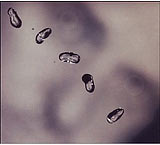
|
Peter Gabriel: Up (2010) Want to hear multiple bass lines again at the same time, in stereo? Check out "No Way Out" (track 4). This unique album is new work, played with all sorts of crazy instruments and sounds, and all are virtuosically done to render them into a sonic whole. OK, this came out originally in 2002, but it's all new as compared to classic 1900's Peter Gabriel we all heard when I was playing it on the air in my radio days. |
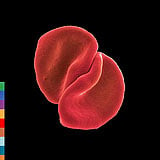
|
Peter Gabriel: Scratch My Back (2010) While we're here, "Scratch My Back" is also loaded with interesting things for the serious listener. All sorts of different sounds and variations are used to all sorts of creative ends. If you're the sort of person who prefers sounds effects to music, you'll also like the huge, fat bass drum rumbling throughout "My Body is a Cage" (track 2 on disc 2), which is also a very complex work of music, as is most of this album. |

|
Pink Floyd: Dark Side of the Moon SACD (1973/2003) If you liked the 1973 original, you're going to love this 2003 re-release. The dynamics are all there, seemingly even bolder, louder and softer than they ever were before. Dark and light, loud and soft, deep and loud, it's all here, and I'm only listening in stereo. This multichannel SACD, for a whopping $16 at Amazon, plays in both regular CD players, as well as SACD players. If you have an SACD player, there are two SACD versions on the same disc: stereo and 5.1. You have three versions for the price of one, all on one disc: CD, Stereo SACD and 5.1 SACD. |

|
Manu Katché: Neighbourhood (2005) While Manu Katché is among the world's greatest percussionists, this doesn't sound like a drummer's album. If anything, the bass leads most of the time. It's a super-clean, quiet and dynamic recording with bottomless bass. The drums sound as if you're sitting inside them and they're 100 feet tall, which in this case, is a very good thing. |
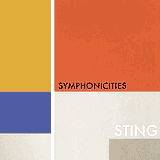
|
Sting: Symphonicities (2010) After we've all tired of hearing a zillion uninspired interpretations of the same songs by others these past few decades, here we have their creator giving us his own new interpretations from scratch. Here we have all the best high-bit horsepower dynamics and clarity here, and in this case, by someone with enough vision to have the music say something interesting as well. It's amazing how the orchestra can walk effortlessly through so many different styles from line to line within each piece, especially track 10, "She's too good for me," and have it all fit together. As a bad bassist myself, it's nice to hear multiple basses playing in the last track, swapping from a long arco note to pizzicato to end the piece. You don't hear that every day in pop music. The liner notes credit all the players, too, which is a nice touch for an orchestral album. |
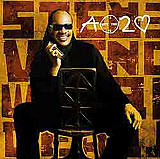
|
Stevie Wonder: A Time 2 Love (2005) Most of this album is loaded with some of the deepest and strongest Moog bass pedals I've heard on a recording. These will show you if your system is reproducing the fundamentals, or just booming. There's a lot going on down there, if your hi-fi is up to it. Don't miss the last two-thirds of the last 9-minute-long track which must have a thousand layers of percussion and grand piano woven into an almost symphonic excursion into our imaginations, all played above the solid Moog pedal fundamentals. In addition to the usual vocals and piano, there are percussion artists from Nigeria, India, Puerto Rico, the USA, Uzbekistan, and the Middle East, as well as strings, choirs, Moog bass pedals and even Sir Paul McCartney, all woven together into one piece as only a virtuoso could. Anyone can slop together way too many things at once, but only a virtuoso can put this much together and create one cohesive work. Over speakers, all the goings on weren't as interesting as a careful listen over STAX headphones, where every performer remains distinct from the rest. Listen carefully, and you'll hear some voices slowly orbiting in 360° circles around your head! Audiophile weenies beware: some of the other tracks on this album use deliberate distortion for effect. It's not your speakers, it's art. |
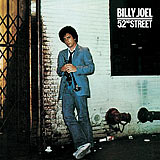
|
Billy Joel: 52nd Street (1978/1982) CBS Recordings CK 35609 (© 1978, CD: 1982) This is the first CD (Compact Disc) ever released. As such, Sony, who owned CBS records, selected 50 of the most popular and best-sounding albums to release along with the first CD players to impress people enough to make them want to shell out the equivalent today of thousands of dollars for these new CD players. Sony wanted to be sure that people heard one heck of a difference between the LP and the CD version, and this original 1982 CD sounds incredible. If you can find an old, used copy of the original version from 1982, it sounds spectacular, especially because the dynamic peaks and transients haven't been squashed, limited and compressed to make them sound loud on iPods. Pot-up the intro or outro of "Stiletto" to remember when "Digital Ready" meant that your playback system needed 25 dB of headroom (or more) not to clip the peaks which today are largely removed from all pop CDs. Unlike most of today's CDs, you can hear everyone playing on this disc, and it's popular music, not some boring audiophile drivel. Because the dynamics live, the music lives on this CD; when there's a musical point of emphasis (accent or drum whack) to be made, you can hear it, not just imagining what it used to sound like. In "Until the Night," when it gets soft, it gets soft, and at the end, you can hear 17 seconds of Billy Joel's Steinway calmly decaying into silence. I got my copy used through a 3rd party on Amazon, delivered, for less than $4. I can't vouch for any more recent remasters. |
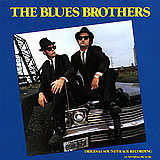
|
The Blues Brothers (1980) Presuming you can find the original 1980 CD (yes, it's marked © 1980 even though CDs weren't released until 1982), this killer recording explodes out of the speakers with dynamics and great playing. The bands are tight and together. These are all crack studio musicians and better, not some tribute band. They dynamics, articulation and phrasing are all over the top. This music is so well orchestrated that the dynamics speak for themselves. We've all gotten so used to lame tributes and re-renderings of this classic blues music that this original CD is stunning. It was performed for the film (and thus this CD) by the day's, and history's, greatest and most gifted artists. Since this CD sort of snuck in at the dawn of the CD, the dynamics are all there. Peaks all hit 0 dB FS, while the actual VU levels go all over the place as the music takes it. Newer CDs sound broken by comparison. Pop this in your player, set your volume quickly on the guitar that leads, and when the brass comes in a moment later, you'll get blown back the way you're supposed to, not hear the guitar get pushed down by a limiter with everything at the same boring level. I can't vouch for any of the newer re-releases. |
Loud CDs that also sound great
These CDs are loud, and they also sound great.
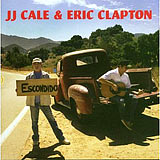 |
Clapton and JJ Cale: The Road to Escondido (2006) If you like Clapton, you'll love this album. These two virtuosi go at it with spectacular performances. Even though any dynamics have been carefully removed, the music still sings in this very clean recording. This album is loaded with great music, and it all sounds super-clean, even though it's all pushed to the maximum loudness. |
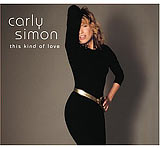
|
Carly Simon: This Kind of Love (2008) This Frank Filipetti-produced album sounds great, and is also loud at the same time. All its peaks are continuously at 0 dBFS, and it still sounds great. |
Duds: Boring recordings of great performances
Many CDs fall into this bin today, so I won't mention most of them. The problem is that all the dynamic differences between loud and soft, or few or many instruments, are removed so everything plays at the same loud level all the way through. Lost is the emphasis when something would suddenly have gotten loud or accented, or when something suddenly goes soft. In these recordings, it's all the same level all the time.
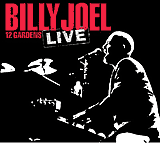 |
Billy Joel: 12 Gardens Live (2006) Great music, but with nasty levels of dynamic compression that squash all the music into one boring blah. No matter how loud or soft it's supposed to be, or how many or how few instruments are playing, it's all the same dull volume level. As the album opens and instruments join in, each new instrument simply squashes down those that were playing before. These guys are playing their hearts out, but it's all squashed in dynamic compression and limiting. |
Duds: Great recordings of boring performances
For a great recording, you need brilliant performances of fantastic music, and ideally a good recording of it, in that order. Even if the recording or the music itself isn't very good, you've still got something worthwhile so long as it's performed brilliantly, but if it's not, who cares?
In the case below, as typical with audiophile recordings, no one noticed that the performance is uninspired, so who cares?
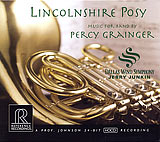 |
Dallas Wind Symphony: Lincolnshire Posey (2008) Reference Recordings HDCD RR-117 TT 73:43 Every fan of wind ensemble music is familiar with these pieces, and since they are so infrequently recorded, we snap them up. This recording sounds great, but the performance is one only an audiophile could love. It's uninspired, as if the band really has better things to do than play this gig. Compared the the real reference for these, the Frederic Fennel recordings, this performance is sloppy. Intonation is sloppy, and the band doesn't stay together the way Frederick Fennel got his ensembles to play. It sounds sloppier over speakers than through STAX headphones, a common problem with a reproduction chain that transparent. It sounds so pretty over the electrostatics that the ear stops paying as much attention to the actual performance! This HDCD sounds great on regular CD players, and sounds phenomenal imported into iTunes for playback. HDCDs are regular CDs, with an inaudible amount of very low-level dynamic (not data) compression. The LSB is coded during the louder sections with the decoding data, and read by HDCD players to drop the low levels back down further to where they belong. Even without an HDCD player, these sound better than most CDs, but sadly, the performance is a loser. The only sonic weirdness of playing on a regular CD player is what sounds like the reverb tails of loud sections hanging-on a bit at the ends of their decay, but that actually sounds quite nice. Get either of the Fennel performances (the 1984 CD or 1984 SACD version, or 1958 performance) and you'll hear the difference between this 2008 recording and an inspired performance. You can hear the differences even at Amazon's previews. |
Home Donate New Search Gallery Reviews How-To Books Links Workshops About Contact



